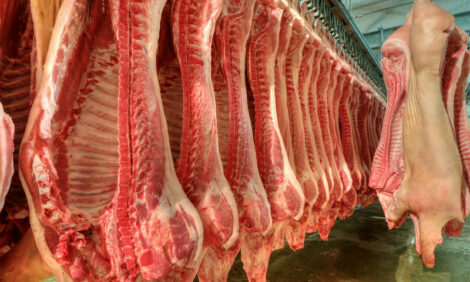



Revisiting Recent Corn Stocks Estimates
US - While the USDA’s estimate of the 1 September 2011 inventory of old crop corn is old news, there are ongoing questions surrounding the quarterly stocks estimates. For corn, quarterly stocks estimates have not been well anticipated since June 2010, write Darrel Good and Scott Irwin from the Department of Agricultural and Consumer Economics at University of Illinois .The 1 June 2010 estimate of stocks was surprisingly small and implied feed and residual use during the previous quarter that was too large. The 1 September 2010 estimate of stocks was larger than anticipated based on the level of 1 June stocks, but seemed to "correct" for the small estimate in June. The implied feed and residual use for the 2010-11 marketing year based on that estimate was reasonable.
The 1 December 2010 and 1 March 2011 estimates of stocks were marginally smaller than expected and implied a high rate of feed and residual use during the first half of the marketing year, eight per cent above that of the previous year.
In contrast, the 1 June 2011 estimate of stocks was much larger than expected and implied a very dramatic slowdown in the rate of feed and residual use during the third quarter of the 2010-11 marketing year.
Unlike in the previous year, the 1 September 2011 stocks estimate did not correct for the large June estimate, but instead compounded the implications of the June estimate.
Implied feed and residual use of corn during the final quarter of the marketing year was unreasonably small and implied use for the last half of the 2010-11 marketing year was a third less than in the same period a year earlier.
Such a large decline seems unreasonable given that the number of livestock fed was larger, average slaughter weights were about equal, implied feed and residual use of wheat was 45 million bushels less, feeding of soybean meal was down four to five per cent, and feeding of distillers grains was only about three per cent larger.
Calculated feed and residual use of corn for the 2010-11 marketing year is unreasonably small. The estimate of large 1 September stocks also appears at odds with the on-going very strong corn basis.
Explanations offered for the surprisingly large 1 September stocks include the possibility that the 2010 corn crop was under-estimated and/or the amount of corn used for ethanol production has been over-estimated.
If correct, either of these explanations would result in a larger calculation for feed and residual use and might make sense if the September stocks estimate was the only one available for the year. However, neither explanation is consistent with the level of stocks on 1 December 2010 or 1 March 2011.
In addition, the size of errors implied by these explanations would have to be very large to result in a reasonable calculation of feed and residual use for the year. Some speculate that stocks of the newly harvested crop were included in the estimate of “old crop“ stocks.
Such an inclusion would require unique reporting errors by survey respondents and those errors would have to be very large to result in a reasonable calculation of feed and residual use in the last quarter of the year. There is not an obvious problem with USDA methodology that has produced reasonable stocks estimates until recently.
The implied low level of feed and residual use last year complicates the forecast for the current year. Use might be expected to decline in 2011-12 due to a combination of unchanged hog numbers, declines in broiler chick placements, declining cattle feedlot inventories starting in early 2012, and a stable supply of distillers grains. But will use really decline from the extremely low level implied for 2010-11?
Corn prices declined after the release of the 1 September stocks estimate, but were already under pressure as a result of concerns about US and world economic conditions and a general decline in commodity prices (excluding livestock).
In addition, the corn market has been influenced by reports of better-than-expected yields. It is yet to be determined if "better-than-expected" translates into "higher-than-forecast". The USDA will release new corn production and consumption forecasts on 12 October.
The recent decline in corn prices has resulted in profitable margins for almost all users of corn, suggesting that prices are low enough to encourage an increase in consumption. The USDA’s October reports will provide a new benchmark for evaluating consumption.
After that, weekly estimates of exports, ethanol production, and broiler placements will provide information to gauge the pace of consumption relative to projections and to judge the price level.








